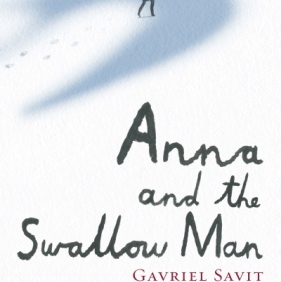
Lifestyle/Community

Tale of survival and endurance through the dark war years
STEVEN KRAWITZ
Anna’s mother has passed away and her father, a professor of linguistics at the Jagiellonian University in Krakow, has ensured that she has mastered Polish, German, Russian, French and English and can converse in Yiddish, Ukrainian and Armenian.
Two months after the German invasion of Poland, Professor Lania is deported by the Nazis to the Sachsenhausen concentration camp in Germany, leaving Anna all alone to fend for herself in a hostile city. Former friends and neighbours are too terrified for their own lives to look after a Jewish orphan.
Quite magically Anna encounters the Swallowman, a man who can also speak many languages and can even converse with birds. A strong enduring relationship develops between the two for the hellish duration of the war. Anna and the Swallowman encounter the mass killings and graves of the Ukrainian Holocaust and witness the first salvos of Operation Barbarossa.
The simple act of survival in the Polish, Ukrainian and Russian countryside is perilous and death lurks in every shadow and leaf’s rustle.
Gavriel Savit grew up in a Modern Orthodox family in Ann Arbor, Michigan, a university town where his father lectured theoretical physics at the University of Michigan and his mother taught cello.
His upbringing has given him a strong Jewish identity which is apparent in his writing. After studying musical theatre in Ann Arbor, Savit moved to New York to pursue a career in theatre performance and to pursue other projects, including writing.
“Anna and the Swallowman” has strong resonances with other Second World War and Holocaust films and novels, especially “A Beautiful Life” and “The Boy in Striped Pajamas”. What sets Anna apart and could turn it into a modern classic, is the fairytale quality and the “open uncertainty” that underpins the novel.
This “open uncertainty” makes the book more challenging and far more rewarding than a straight forward narrative that ties up all loose ends by the last page. In conversation Savit expressed his belief in the need for historical fiction to reflect lived experience, to convey the complexity of the historical reality and to capture the nuances as they were experienced at the time, instead of the certainty that hindsight allows.
Savit also feels the enormous responsibility in telling a Second World War story and capturing a sense of truth true to the historical record, especially as fewer Holocaust survivors and witnesses of the war remain alive.
On the Swallowman, Gavriel said that this character still eludes him. The book is narrated from the perspective of Anna, who is seven at the beginning and a young teenager at the end of the book. Her ability to understand the war is understandably limited and the reader is able to piece a fuller narrative from Anna’s.
The Swallowman’s strategy for survival is non-disclosure, and we never fully know where he came from, nor why he took to the road. But we have ample clues and many possibilities to speculate over.
Although Anna and the Swallowman is being marketed to young adults, it truly deserves a much wider readership, independent of age. It is a book that shows a sense of wonder even during the darkest times, the will to survive and a very special relationship between a magical, secretive man who is wrestling with his own demons and a young girl who is in the process of self-formation.




